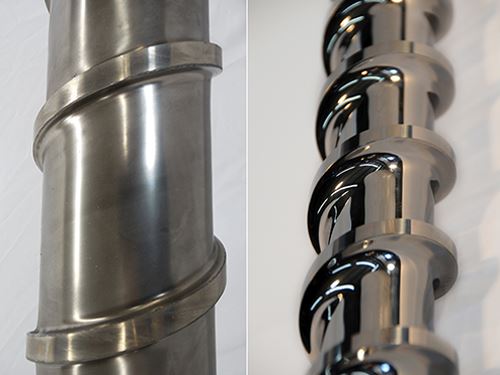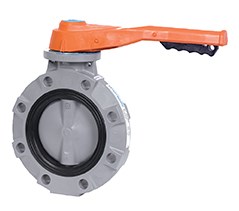Novel Coating Dramatically Extends Life of CPVC Screws
Molding parts of CPVC require Hayward Industries to re-coat its screws every 12 months. Now, thanks to a unique screw coating, it’s at eight years and counting.
Time is money in most businesses, and plastics processing is no different. At Hayward Industries’ plant in Clemmons, N.C., a switch to a unique coating technology extended the screw life on a press molding a CPVC part from 12 months to an astounding eight years … and counting.
Hayward is the world’s largest manufacturer of residential swimming pool equipment in the world. Headquartered in Elizabeth, N.J., Hayward designs, manufactures, and markets a complete line of energy-efficient residential pool equipment, including pumps, filters, heaters, heat pumps, cleaners, electronic control systems, electronic chlorinators, lighting, safety equipment, flow-control products, and white goods such as skimmers, main drains, and other thermoplastic pool fittings.
In Clemmons, Hayward’s Flow Control Div. runs a range of materials on more than a dozen injection and blow molding machines. A particularly nettlesome project involved molding filter-vessel bodies and butterfly-valve bodies out of corrosive CPVC on a 1000-ton press equipped with a 150-mm, 20:1 L/D plasticating unit. The shot size for this part was about 20 lb, so the cycle was on the long side. “On this machine, we’d run CPVC about 30% of the time,” recalls Bill Reece, maintenance manager. “But about every 12 months, the hard chrome plating would corrode off and we’d have to re-chrome the screw.”
Working with its screw builder, Canterbury Engineering, Chamblee, Ga., Hayward selected the CarbideX C4000 corrosion-resistant coating offered by Extreme Coatings, St. Petersburg, Fla. The result is that a screw that had to be pulled and recoated every year has been producing parts consistently for eight years now. Over the last five years, in fact, Hayward has been processing PVC and CPVC on this press at a rate of 200 hr/month.
CarbideX CPR (chrome-plating replacement) is a family of high-performance protective treatments for screws and other plasticating components. Each treatment option offers its own unique characteristics, allowing solutions to be customized to a particular application, explains Gregory Quinn, Extreme’s senior v.p. Some offer higher wear resistance, others are engineered for high temperature, and all are corrosion resistant, Quinn states.
Compared with hard chome plating (HCP), Quinn says CarbideX CPR “blankets” the screw with a uniform protection on the entire working surface, especially in the radius where standard HCP does not build. This, coupled with low porosity, reportedly protects the substrate from harmful corrosive gasses emitted by PVC, CPVC and additives such as halogen-free flame retardants.
The screw is highly polished to a 2-4Ra mirror finish, which reduces the possibility of polymer sticking and degrading while also promoting faster purging and cleaning, according to Quinn.
Reece says Hayward relies on another of Extreme’s materials—CarbideX C1000—on presses running materials with 20-30% glass loadings. “About 80% of the machines in the Clemmons plant are equipped with screws coated by Extreme,” Reece notes. “C1000 has quadrupled screw life in glass-filled applications. The coatings are not cheap, but they pay for themselves.”
Reece adds that Extreme’s coatings are now specified on all new machines Hayward buys.
Related Content
-
Extreme Coatings Names Jackson Director, North American Sales
Company also extends its global manufacturing footprint.
-
Improve Production Rates Via Screw Design — Barrier vs. General Purpose vs. Melt Uniformity
I’m looking for a few good molders to help trial a new screw design, and share data and results for a future article to prove the benefits of a melt uniformity screw.
-
How Screw Design Can Boost Output of Single-Screw Extruders
Optimizing screw design for a lower discharge temperature has been shown to significantly increase output rate.


















